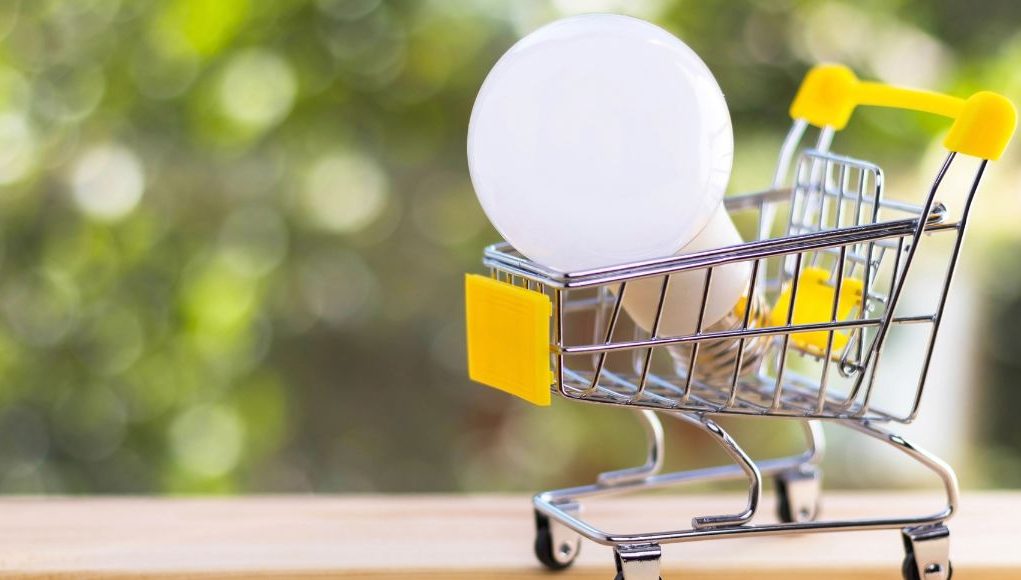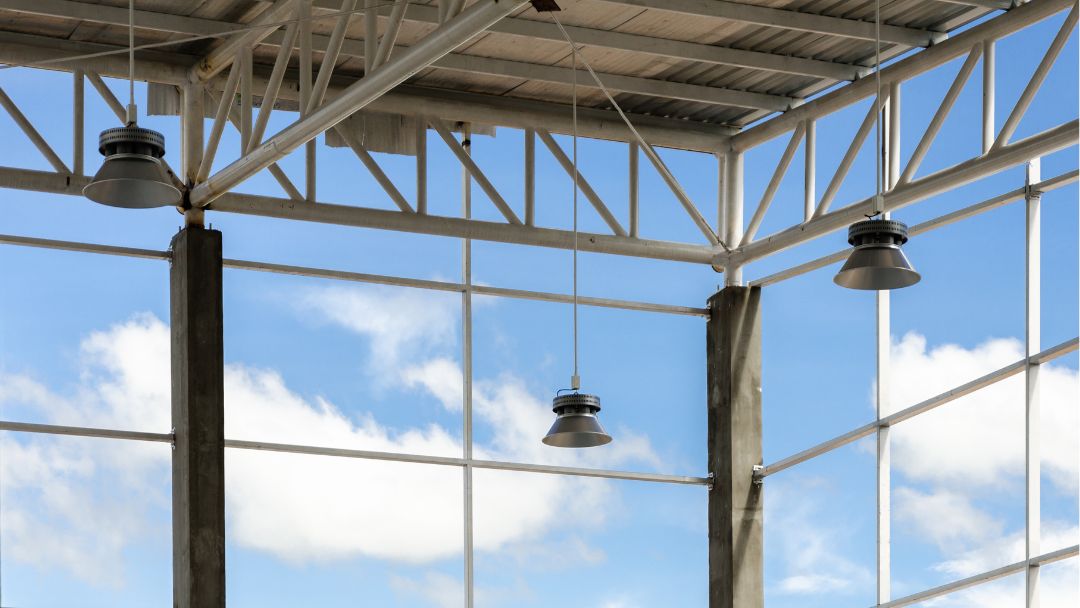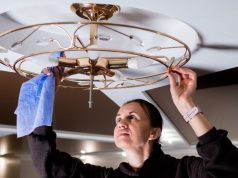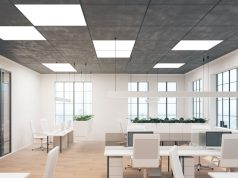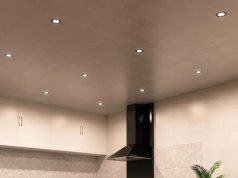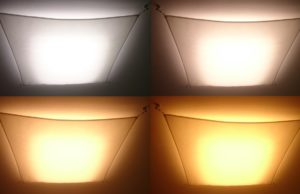You have a commercial space that needs lighting. So, you buy the biggest, brightest light, right? Wrong!
There’s no one-size-fits-all solution for your lighting needs. One part might need a wide, bright ceiling light, another might need a bendable light fixture for a display, and there’s an area where you need emergency lights.
Every commercial space has unique lighting needs. Depending on the purpose, solutions must be tailored to address these. That’s why it’s essential to know how to choose the right lighting for your business.
Why Does Choosing the Right Commercial Lighting Matter for Your UK Industry?
Installing the right lighting solution in a commercial setting is paramount. Lighting can greatly impact different aspects of the space, including its atmosphere, the well-being of workers and customers, and overall energy costs.
Adequate lighting improves visibility, allowing workers to perform tasks effectively while reducing the risk of accidents. Proper lighting plans also improve energy efficiency, resulting in lower annual costs and improving the business’s energy savings.
Commercial lighting regulations in the UK, especially the Health & Safety at Work Act 1974 and the Workplace Regulations Act 1992, strongly encourage industries to follow their guidelines and lighting standards to ensure that all can experience the benefits mentioned above.
This guide will help you identify the different elements to consider when choosing the right commercial lighting for your industry’s needs.
What Core Factors Should Every UK Business Consider When Choosing Commercial Lighting?
We’ve listed some questions to answer that will help you when choosing the lights for your needs.
What are the specific visual tasks performed in your workspace?
To determine the kind of light you need, you first must identify the purpose of the space where you’re installing it. This will help you assess whether you need ambient lighting, task lighting, accent lighting, or decorative lighting. Depending on its function, this will also tell you how bright your space needs to be.
According to BS EN 12464-1, the brightness should not be below 200 lux in workplaces with continuous work.
In a commercial environment, the right types of light are crucial for ensuring a welcoming atmosphere and that customers’ attention is directed towards the important products in the store. Poor commercial lighting choices negatively impact your business.
What is the required uniformity of light across the space?
A significant factor in determining how much light a space requires is its size, including floor area and ceiling height. Taking these into account will help you create a solid lighting plan that guarantees your space gets the correct amount of light, not too dark or too bright.
A general rule for how far apart overhead lighting should be is half of your ceiling height. So, if you have a 16-foot ceiling, your lights should be 8 feet apart for the best light coverage.
Task lighting usually has less space between fixtures.
How can you maximise energy efficiency and reduce operating costs in the UK context?
Though initial costs might be high for more energy-efficient commercial lighting solutions like LEDs and smart lighting, their long lifespan and less frequent replacement generate savings. In the UK, rebates and incentives are also given in the first year of switching to energy-efficient lighting.
What are the relevant UK safety standards and regulations for your industry?
Check if the selected lighting fixture meets the UK lighting regulation standards. There might be differences depending on the industry you’re in (commercial and industrial spaces have different lighting regulations), so always make sure you’re following the right set of standards to avoid problems.
How can lighting contribute to the desired atmosphere and brand image?
Lighting can evoke a desired emotion. Warm colors create an inviting, calm environment, while white, bright light can make a joyful, high-energy space. The colors of the light you use can impact the overall experience of the people within your space.
What is your budget for initial investment and long-term maintenance?
This is where the LED versus non-LED light fixtures come into play. Undeniably, LED lights can cost more than traditional ones like incandescent and CFL. The upfront cost to replace every bulb in your commercial space would be significantly higher (around 3x to 14x, depending on the fixture) than traditional lights.
However, this upfront cost becomes insignificant when you factor in the differences in lifespans and efficiency levels. Incandescent light bulbs have an average of only 1,000 hours, while LED lights can last up to 50,000 hours. This means that for incandescent lamps, the upfront savings you made will be significantly lessened by the replacement costs since you’d have to replace the lamps up to 50x for every 1x LED light replacement.
LED lights are also 75% more energy-efficient than incandescent lamps, so you’ll save more on electric bills with this lighting choice.
What level of lighting control is needed?
Smart lighting features like dimming, sensors, and automation/scheduling are great investments that can lower your overall energy costs, but only if you really need them in your space. Different settings might have less use of smart controls, so adding them to your lighting system might just be an unnecessary expense.
How Do Lighting Needs Differ Across UK Industries?
Offices
Proper lighting has been proven to improve worker productivity by reducing eye strain and fatigue. This results in a boost in efficiency and motivation. Improved visibility also reduces the risk of accidents, especially in busy production areas.
Some popular choices for general office lighting are LED panel lights, fire-rated downlights, and linear lights.
Retail
Good retail lighting is known to attract customers into a store, and a well-designed lighting plan should be able to guide them from the entrance to the cashier. Accent lights and backlights help highlight important products, making them more eye-catching for customers.
Key considerations for retail lighting are having uniform lighting, energy efficiency of the fixtures, and the store’s traffic.
Warehousing & Logistics
Adequate lighting is crucial for visibility and safety in this setting. Dark corners, dim exit signs, and inadequate emergency lighting could pose potential safety hazards when left unchecked. You need high-quality high bay lights, aisle lights, and LED signage to reinforce your system.
Choosing energy-efficient commercial LED lighting solutions means they last longer than traditional lights, allowing you to save on replacement and maintenance costs.
Healthcare
Lighting in the healthcare setting should be specific. It needs to be bright enough for the hospital staff to provide care but not too bright as to create discomfort for the patient. Healthcare lighting should provide an environment that can aid patients’ recovery.
According to the CIBSE: SLL Lighting Guide, 300 lux is the minimum level for patient lighting and general nursing care, while examination and consulting rooms require a minimum of 500 lux.
Education
Proper lighting systems in schools enhance the learning environment by making students feel safe, reducing their anxiety, and improving their well-being. Primary schools and universities have already embraced the use of energy-efficient lighting to produce more productive classrooms.
Hospitality
Lighting in hotels and restaurants should strike a balance between ambience and functionality. You want to create a pleasant atmosphere while still allowing your customers to be able to read menus and enjoy their stay.
Utilising ambient, task, accent, and decorative lighting in your space can create depth, set the mood, and enhance the experience.
When Should You Consult a Commercial Lighting Specialist in the UK?
Planning on upgrading your commercial lighting? Here are the times when you should consult a specialist to help you with your lighting upgrade:
- Large-scale projects: Get a specialist to manage all the complexities that come with undergoing major renovations.
- Meeting lighting standards: If you’re unsure about the workarounds for health and safety requirements and energy efficiency standards compliance, get expert help.
- Sustainability and energy efficiency: A specialist has a better understanding of how to choose energy-efficient lighting solutions that can significantly reduce energy costs.
- Functionality: A specialist can help you achieve optimal lighting for enhancing productivity and promoting well-being.
- Cost and time savings: Lighting mistakes can be costly. Get a specialist’s help to avoid unnecessary expenses.
Ready to Choose the Right Commercial Lighting for Your UK Business?
All the commercial lighting you need is in one place. Explore Simple Lighting’s wide range of commercial lights. We have a proven track record of providing high-quality retail, commercial, industrial, and residential lights. You can check out our options and see what people love about us in the reviews.
Making the Smart Lighting Choice for Your UK Industry
A solid understanding of the different factors affecting how you choose the best commercial lighting for your business is crucial to ensuring that your lighting solutions operate as intended and regulated.
That’s why it’s best to get the help of an experienced individual or group in the lighting industry to help you set up lighting solutions that fit your unique needs. Head on over to Simple Lighting today to get your lighting project started right.


